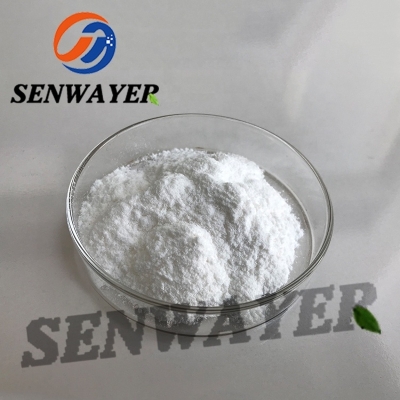-
Categories
-
Pharmaceutical Intermediates
-
Active Pharmaceutical Ingredients
-
Food Additives
- Industrial Coatings
- Agrochemicals
- Dyes and Pigments
- Surfactant
- Flavors and Fragrances
- Chemical Reagents
- Catalyst and Auxiliary
- Natural Products
- Inorganic Chemistry
-
Organic Chemistry
-
Biochemical Engineering
- Analytical Chemistry
- Cosmetic Ingredient
-
Pharmaceutical Intermediates
Promotion
ECHEMI Mall
Wholesale
Weekly Price
Exhibition
News
-
Trade Service
From the audition to the knockout competition, China's innovative drugs have entered a more rigorous testing stage
.
2021 is known as the year
of harvest of domestic pharmaceutical innovation achievements.
80 new molecules (drugs not marketed in China) were launched in China for the first time, and domestic new drugs were approved to a new high, the first CAR-T
Therapeutics, the first domestic ADC, the first domestic PD-L1 monoclonal antibody.
.
.
Drug review reform and the promotion of policies to encourage innovation have yielded fruitful results in this year
.
At the end of 2021, a total of 501 clinical trials related to innovative drugs were registered by the National Drug Evaluation Center, including 106 phase III clinical trials
.
Therefore, the industry has predicted that the future is 3-5
year, China's innovative drug listing will usher in an outbreak
.
Everyone is looking forward
to the innovations in 2022.
So what is the truth?
According to incomplete statistics of public information, as of November 17, the NMPA has approved a total of 43 new drugs, including 24 local new drugs
.
According to Bydrug, a total of 62 new drugs were approved in the same period last year, including 32 domestic new drugs
.
Both in terms of the overall number and the number of local new drug approvals, it has fallen by about
30%.
2022 NMPA approval of new drugs (as of November 17) Note: According to public information, there may be differences due to different statistical calibers
From the perspective of approved types (according to CDE classification), 24 varieties of chemical drugs have been approved, accounting for nearly half; Seventeen biologics, including vaccines, were approved
, remained the same as last year, but in terms of proportion, biological drugs have increased significantly; Two Chinese medicines have been approved so far, less than half
of the same period last year.
From the perspective of coverage areas, the field of oncology is still the most approved track, but at the previous CSCO conference, Yang Zhimin, deputy director of CDE, released the "2022 China Anti-tumor New Drug Review Report", as of October 2022, 55 new anti-tumor drug NDAs (including new indications) were approved for marketing in 2022, of which 21 were the first indications for marketing
.
New drugs approved for the first time have been generally flat in the past three years, but the number of new indications in 2022 has decreased
compared with 2021.
01 Local new drugs: accidents and surprises, which comes first?
Local new drugs: surprises and surprises, which comes first?Previously, E drug managers had predicted 41 new drugs from 36 pharmaceutical companies that would be launched in China based on NDA declaration information, and from the approved situation, 9 drugs such as dogliptin and reverutamide that were successfully marketed, and there were also varieties like Plinabulin that were "cold" and not only when they "returned to favor"
.
From the perspective of the varieties approved in China, compared with last year, there are both surprises, joys, controversies and helplessness
.
In March and July, Henlius' serplulimab and Lepu Biologics' putelimab received drug approval documents, and the domestic PD-1 market ushered in the scene of
10 products competing on the same stage 。 At present, BeiGene's tislelizumab has been declared and marketed in 11 indications in China, Cindilimab's Cindilimab has also been approved for 7 indications, and Hengrui's carrelizumab also has 8 indications in hand.
.
.
On November 15, Junshi Biologics announced that it has submitted a marketing authorization application to the European Medicines Agency (EMA) for teripulimab for first-line treatment in patients with locally relapsed or metastatic nasopharyngeal carcinoma (NPC) and paclitaxel and cisplatin in patients with
unresectable locally advanced/recurrent or metastatic esophageal squamous cell carcinoma (ESCC).
Teripulimab is the first domestic PD-1 to enter Europe with nasopharyngeal carcinoma, and BeiGene and Hengrui have also had a presence
in relevant European regions.
Whether the competition of PD-1 is described as a hundred flowers or homogenization, the competition of PD-1 has entered the second battlefield: the expansion of new indications and new markets
.
On June 29, Akeso independently developed it
PD-1/CTLA-4
The bispecific antibody cardunilimab injection was officially approved for marketing in patients with relapsed or metastatic cervical cancer who had previously failed platinum-containing chemotherapy
.
This is the first bispecific antibody drug independently developed by a domestic enterprise, and it is also the world's first basis for approval for marketing
Bispecific antibody drugs for PD-1, and also possible for cardunilimab in this
year's health care negotiations.
In the case of PD-1 becoming the "king of volumes", bispecific antibodies have become the next hot competition area, according to the statistics of Medic Cube, there are currently more than 700 bispecific antibody drug candidates in the world, but only two new drugs are in the NDA stage
.
On January 10, 2022, Icariin Softgels became the first domestic Class 1 innovative drug approved for marketing, and it is also the only two approved innovative Chinese medicine drugs so far this year
.
This is the first drug to target IKKα, and according to the WuRong Cloud database, only 5 studies have been conducted for this target, and all of them are in the drug discovery stage
.
After its launch, it caused controversy
about its clinical and efficacy.
With the controversy, Sinokey still quickly reached a commercial cooperation
with Huadong Pharmaceutical.
In 2021, Hengrui spared no expense to introduce two new drugs, Yingli Pharmaceutical's PI3K delta inhibitor Linplise and Dalian Wanchunbulin's Plinabulin, both of which were considered the most likely new target innovative drugs
to be launched this year.
Subsequently, Plinabulin FDA was blocked, the prospect was a mystery, and in January this year, Gilead and Incyte successively suffered setbacks in PI3Kδ inhibitors, which once made the market doubt Hengrui's "vision"
.
However, with the official approval of Prissel, it not only made the "stone" of the market fall to the ground, but also gave Hengrui a surprise
.
However, Hengrui's other new drug that has attracted much attention, repagliptin, has not been launched
as expected.
As early as 2009, the clinical study of repagliptin phosphate of Hengrui Pharmaceutical was reported in China and the United States and approved
.
Since then, repagliptin has experienced the application for listing and then revocation, and the fate is ill-fated
.
Hengrui wants to hit the diabetes market, and the prospects are still unclear
.
On October 8, the NMPA announced that it had approved the marketing of Hua Medicine's new class 1 drug Docagliatin tablets to improve blood sugar control
in adult patients with type 2 diabetes.
This is not only the first product of Hua Medicine to be commercialized, but also the world's first new drug
for GKA diabetes treatment.
It is worth noting that 3 new crown vaccines were still approved this year, among which CanSino's inhaled recombinant new coronavirus vaccine, which was approved and began to be vaccinated in the early stage of the Expo, "brushed" the industry and capital market, and successfully drove
the surge of related concept stocks.
After announcing the start of vaccination, CanSino's share price rose more than 160%
in seven days.
02 Overseas new drugs: accelerate the introduction and continuously shorten the synchronous time
to market.
to market.
At this year's Expo, multinational pharmaceutical companies unanimously released a signal: to accelerate the launch
of innovative products in China.
Following the announcement on December 22, 2021, the official website of the US FDA that Pfizer's oral anti-new coronavirus drug nematevir tablets/ritonavir tablets combination (Paxlovid) received emergency use authorization for the treatment of patients over 12 years old with mild to moderate new coronary pneumonia, on February 12, 2022, the State Food and Drug Administration of China conditionally approved the import registration
of Pfizer's Paxlovid in accordance with the special approval procedure for drugs.
Although the rapid global synchronization of P drug is catalyzed by the epidemic, it is undeniable that it opened the situation
of multinational pharmaceutical companies' innovative products entering China rapidly in the beginning of the year.
In addition to P drugs, Pfizer has also launched two new drugs in China: lorlatinib (Borina) and abaxitinib (Xipitenib), of which the Janus kinase (JAK)1 inhibitor albuxitinib was approved by the US FDA on January 14, 2022, and entered China
in the same year.
Bayer has also launched three products in China this year, of which Victong (Vericigua) was just approved by the FDA in January last year, and the other product, fenelidone, tablets were approved by the US FDA on July 9, 2021, the European Medicines Agency (EMA) approved for marketing authorization on February 16, 2022, and the Japanese PMDA approved for marketing authorization
in March 2022.
On the whole, the overseas new drugs approved in China this year have accelerated from the previous 5-10 years to the current 1-2 years, and even appeared almost synchronously listed
.
It is understood that in the future, not only will more global innovative products be launched simultaneously, but there will also be a situation
of global innovation in China.
From the previous financial reports of multinational pharmaceutical companies, there are many uncertainties in the double-digit growth of the Chinese market, with the further advancement of centralized procurement, there is no doubt that the days of mature products lying down to make money are gone, want to still occupy a place in the world's second largest market, can fight, in the end must be their best product development and potential varieties driven
.
Narrowing the gap between China and the United States in terms of time to market will become a regular action
for multinational pharmaceutical companies in the future.
03 With the slowdown in listing, will the outbreak of local innovative products still usher in the next 3-5 years?
With the slowdown in listing, will there be an outbreak of local innovative products in the next 3-5 years?In 2002, the "Measures for the Administration of Drug Registration" was promulgated for the first time, and the concept of drug registration was clearly proposed for the first time; In 2015, China's drug review reform kicked off, eliminating the backlog of drug review and approval, while accelerating the speed of drug review and approval, and a series of policies to encourage the creation of new drugs, improve drug quality, and promote industrial upgrading.
Since 2018, due to the promotion of drug policy reform, China's innovative drug industry has gradually entered the harvest period, and nearly ten domestic new drugs have been approved for marketing every year, and pharmaceutical innovation has gradually moved from "local new" to "global new"
.
However, 2022 is nearing the "end", and the approval of innovative drugs has not increased but declined
.
Why is this the case? The encouragement of innovation will undoubtedly remain the same trend and direction
.
It is precisely under this encouragement that targets are clustered, R&D is involuted, and the homogenization problem is serious, and the research and development of local new drugs is facing different challenges
than in the past.
Market expectations for innovative drugs have declined, and the cold winter of the capital market is still continuing
.
The secondary market breaks, the primary market financing difficulties, and the unfavorable commercialization of products.
.
.
Innovative pharmaceutical companies have also begun to reflect on their "status", laying off employees and selling factories, which has become the most urgent action
of many biotechs at present.
On July 2, 2021, CDE issued the "Guidelines for Clinical R&D of Antitumor Drugs Oriented by Clinical Value" for public comments, which was called another "July 22 tragedy" after the "
Announcement on Carrying out Self-inspection and Verification of Drug Clinical Trial Data" in 2015.
How to carry out high-level innovation, improve source innovation capabilities, solve unmet clinical needs, "patient-centered, clinical value-oriented" drug innovation orientation, and put forward higher standards for new drug research and development, let many try to extend tentacles to ME
Companies in the too space are jealous
.
The most intuitive phenomenon is that from the perspective of research and development targets, although the overall quantity has decreased this year, but the quality has increased, last year's fiercely competitive CD19, CD20, HER2, EGFR, PARP and other popular targets have cooled down this year, nerves, self-exemption and other new fields have begun to concentrate.
Undoubtedly, the research and development of innovative drugs has entered the elimination stage
of testing source innovation from the collective start of the first half.
With the almost "cliff-like" decline of approved products, the continuation of R&D homogenization, the impact of the epidemic on supply chain stability and security, geopolitical and other uncertainties, can China's innovative products usher in an explosive period in the future? Where will the "source of living water" come from? What new targets will emerge next year? Which products will enter the life-and-death struggle? Can the vaccine still "eat" the new crown dividend? Will there be new products in the field of cell and gene therapy?







